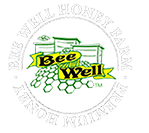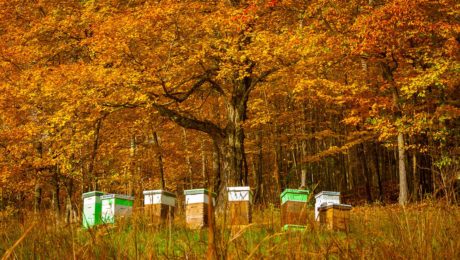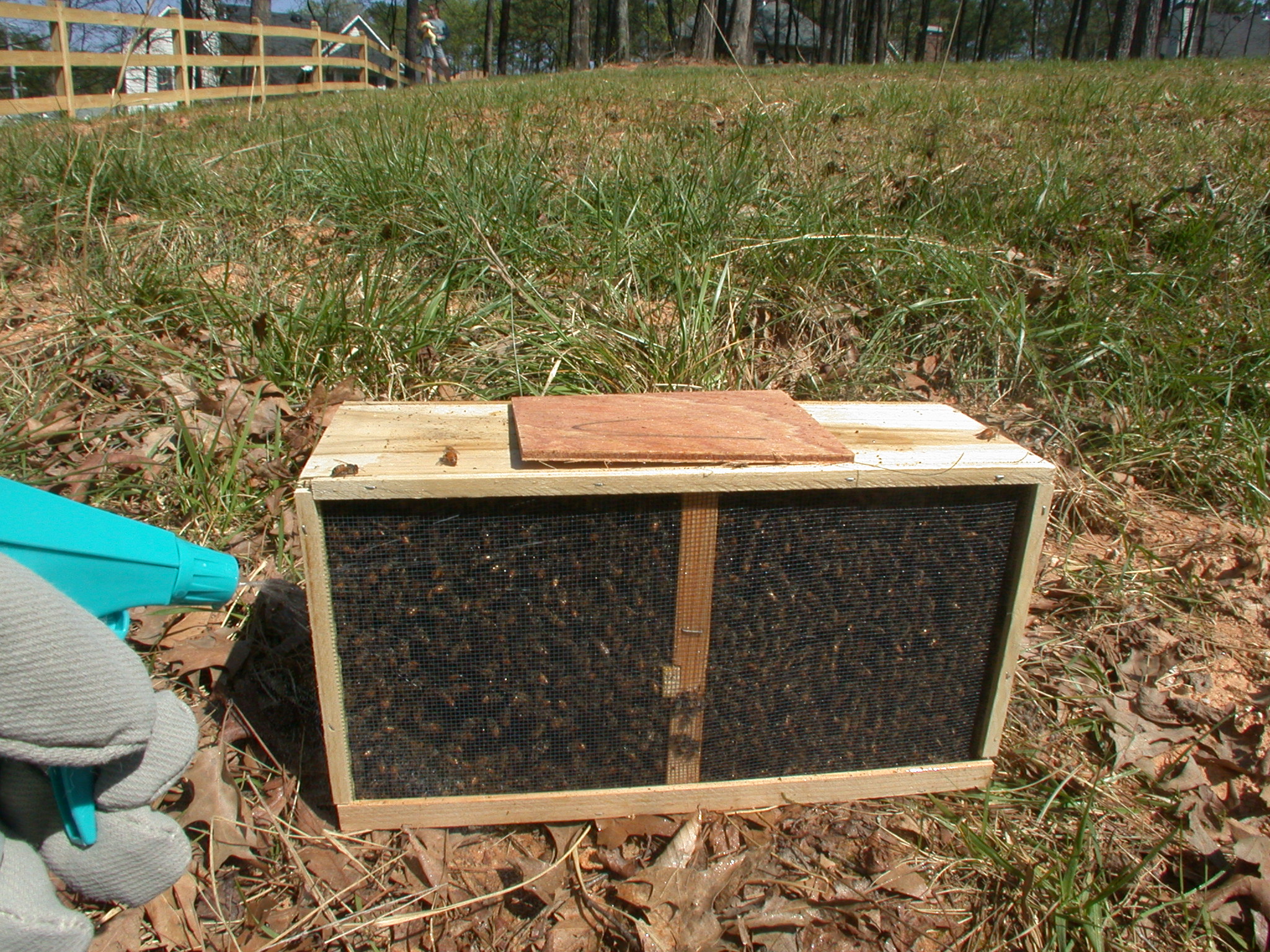What is the best way to get started as a beekeeper? The first step in your journey may be to choose a source of bees! When buying bees, you will be faced with the decision of purchasing package bees vs nucs. Both choices have advantages and disadvantages.
Package Bees
Thousands of packages of honeybees are sold each year. The most popular size is a 3# (weight) package of bees with a young mated queen. They are transported inside a small wire/wooden box with a can of sugar syrup to feed them on their journey.
Package Bees are the most economical and readily available source of bees. Generally available early in the Spring season, package bees are often preferred for beekeepers who want to get started early in the season.
Nucs
Nucs (also know as nucleus colonies) are small starter bee colonies. A nuc usually consists of 5 frames of bees (including drawn comb, honey and brood) and a mated queen. Not all nucs are created equal and when purchasing you should be clear on the size of the colony (# of frames) you are purchasing.
Which is better – packages vs nucs ?
Which is better for the new beekeeper? Packages vs nucs? Unfortunately, there is no clear answer to this question and the best answer will depend on the genetics of the bees involved, the climate/geographic location and the management style of the beekeeper.
Packages vs Nuc (the nitty-gritty)
Package Bees are more economical, less prone to spread pests or diseases (because no honeycomb is involved), and are more readily available. They are slower to build up a working population and have to go through the queen acceptance procedure.
Nucs – Nuc colonies are more expensive than packages of bees. They include a drawn honeycomb, some brood, and bees to cover the frames. Their mated queen will already be laying and accepted. This gives them a jump start initially over package bees. However, the presence of a drawn comb also brings with it the opportunity for pests and disease.
Both package bees and nucs are a great way to get started in beekeeping. Bee Well Honey Farm has been providing bees to area beekeepers for more than 20 years. Always purchase your bees from a reputable dealer and this will help ensure that you get off to the best start possible.
Package bees – the first few months
Buying package bees is one of the most popular ways to get started in beekeeping. Bee farms will shake bees into a screen wire and wood package ( usually about 3# which is around 10,000 bees). To this box they will add a can of sugar syrup so the bees with have some food for their journey and a Benton queen cage containing a new mated queen and a few attendants. Honeybees contained in this manner can be easily transported to their new homes. However, this is an artificial living arrangement and the new group of bees should be placed in their new home as soon as possible. Please install them on the day you pick them up. Keep them in a cool place prior to installation.
The new beekeeper makes it home with their package bees and installs them. Congratulations you have passed your first right of passage ! The first months are a critical time for hive development. The bees will have a lot of work to do to create a fully functioning colony. The queen will be released over the next few days by the worker bees chewing on the candy blocking her cage exit. She may begin to lay eggs immediately upon release but it may take a few days for her to start. It is best to leave the queen alone and allow her time to settle down before inspecting the hive. The worker bees will begin constructing comb on the foundation for the queen to use.
A week after installation, you should be able to find your queen and possibly see eggs or small larva. If for any reason, you do not see a queen or brood (eggs or larva) by the 2 week period you may have a queen failure. This is not a common occurrence but it is a situation that you would need to address if it occurs. The best solution is to order a replacement queen. (Bee Well Honey normally has queens available all during the season).
During this first season, it is vitally important to feed your bees. The package bee colony has a lot of honeycomb to
create and that requires the consumption of large amounts of honey. Your bees will eat the sugar syrup you provide on days that are too rainy/windy for flight and even at night. They will also collect nectar and pollen from natural sources during this time. Bees are not lazy. Feeding them will not prevent them from working. As the early season progresses and many trees and flower blossom, your package bee colony may slow down their intake of syrup. However, once the spring bloom fades and we continue into the hot dry months of June, July and August expect your colony to begin using the syrup more heavily. Needless to say, you must NEVER feed syrup will you have your own honey collection boxes on the hive – the honey produced from your syrup would not be real honey !
How long do you feed ? Bee Well Honey recommends you feed your package bees until they have drawn out all the comb on the 2 boxes that you have designated for their home – AND filled the top box with honey stores for winter. Once this is accomplished, you can discontinue feeding until late summer when
you will check to ensure they have adequate stores for winter.
How long will it take for my package bees to construct all the comb ? There is really no way to tell. Factors such as bee genetics, colony health and local forage conditions will affect the length of time required. Feeding your bees properly will be a great advantage to their progress.
Keeping your bees well fed and checking your queen status during the first few months will give your package bees the best chances to grow into a robust colony.





